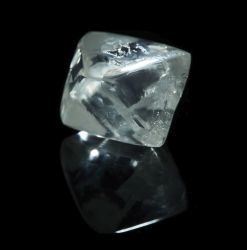
Blue Nile has launched an exclusive line of Lightbox lab-grown diamond jewelry, its first foray into synthetics in its 21-year history.
De Beers-owned Lightbox seemed like the obvious choice for a partner, given the alignment of the two companies’ perspectives, Blue Nile CEO Sean Kell told Rapaport News Thursday.
“We’ve been watching the lab-grown diamond market for some time. We think both natural diamonds and lab-grown diamonds have a place in the market,” he noted. “When we first discussed stepping into the lab-grown space, Lightbox was the only brand partner that came to mind.”
The online jeweler’s partnership with the lab-grown brand is an effort to offer a greater range of products to its customers.
“The launch of the Blue Nile Lightbox collection…now adds even more variety, quality and value for our customers as we head into the new year,” Kell said. “[This] will further expand and transform [our] product assortment to meet the needs of evolving consumers in the jewelry space.”
The collection will feature new and exclusive styles of jewelry, including earring, pendants, bracelets and rings, set with white, blue or pink lab-grown diamonds in 14-karat white or yellow gold. The pieces, which range from $600 to $1,750, will be available both online and in Blue Nile’s newly launched and soon-to-open showrooms, Kell noted.
While Blue Nile’s Lightbox collection will feature fashion jewelry, it will not include engagement rings, for now.
“At this time we do not [plan to carry them],” Kell added. “We think of lab-grown diamonds versus natural diamonds as two separate categories. Our belief is consumers will continue to select natural diamonds for engagement and significant milestones, whereas lab-grown diamonds…will give shoppers an opportunity to expand their jewelry box with…jewelry they can wear every day.”
Lightbox opens its doors
The launch coincides with the debut of Lightbox’s new 60,000-square-foot manufacturing facility in Gresham, Oregon. The synthetics maker began production at the facility during the summer, as construction was being completed, and plans to ramp up output at the $94 million plant to reach 200,000 carats annually.
“Manufacturing lab-grown diamonds in the US was a goal from the beginning,” said Lightbox CEO Steve Coe. “With this facility and our…partnership with Blue Nile, we have an incredible opportunity to grow our business, improve consumer education and further establish Lightbox as the leading lab-grown diamond jewelry brand.”
Lightbox first dipped its toe in the retail space through partnerships with Bloomingdale’s and Reeds Jewelers. Earlier this month, the company announced an expansion to 10 independent retail jewelers in the US and Canada, a move it believes will enable it to gain insight into different audience segments, and learn how they shop and which products appeal to them most.
While the De Beers brand is currently focused on retail partnerships, Coe told Rapaport News he wouldn’t rule out the possibility of “one or two” self-operated stores “at some point.”
The company is also looking to expand its product offering, including creating larger sizes for its lab-grown diamonds, which currently weigh up to 1 carat.
“The biggest priority for us in 2021 is exploring the opportunity to go to larger sizes,” Coe noted. “That is something we are working on — going up to 2 carats.”
Meanwhile, the lab-grown brand is also looking to extend its color range beyond white, blue and pink.
“Our scientists are already looking at other color options, and in the lab at least, we’ve made yellows, greens, violets and other shades,” Coe added. “But that’s more likely in the 2022, 2023 timeframe, probably.”
Source: DCLA











